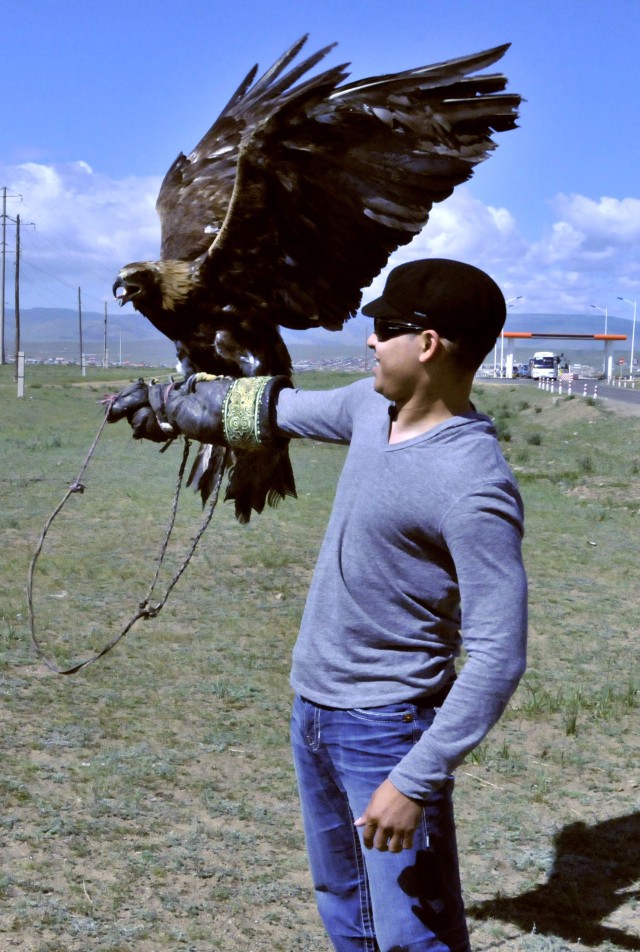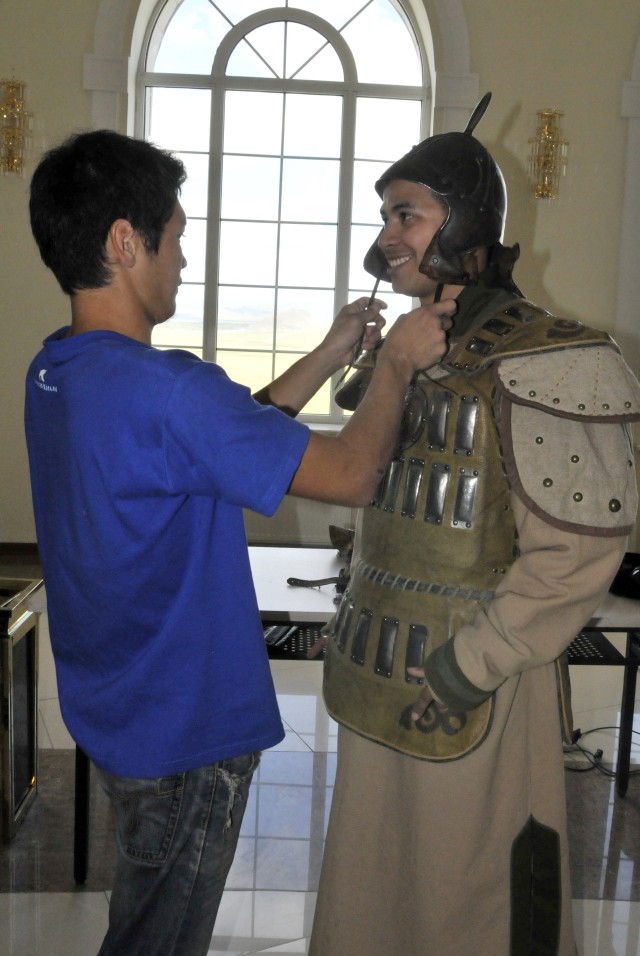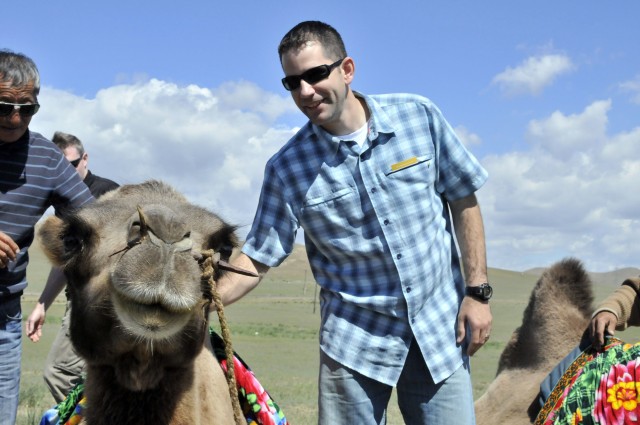ULAANBAATAR, Mongolia - Soldiers with the Alaska and Washington National Guard had the opportunity to explore the city of Ulaanbaatar and dive into the history and culture of Mongolia during a Morale, Welfare and Recreation Day Aug. 15.
The day began with an hour-long ride to the Chinggis Khaan Statue Complex, where the Soldiers saw the world's largest equestrian statue of Chinggis Khaan, also known as Ghengis Khan. The statue is 40 meters high and built on a 10-meter high base, covered by stainless steel and surrounded by 36 columns.
Inside the statue complex, the Guardsmen had the chance to visit the Museum of the Bronze Age and Xiongnu Empire. The museum featured ancient arrowheads, cauldrons, weapons and other tools used during the Bronze Age.
"I think it is an amazing opportunity for our National Guardsmen to not only be able to work with the Mongolian Armed Forces during Khaan Quest 2010, but to also have a day where they can explore the city of Ulaanbaatar and learn more about Mongolia's history and culture," said Capt. Jared Wandell, Alaska National Guard Counterdrug Support Program at Camp Denali, Fort Richardson, Alaska.
After visiting the Chinggis Khaan Statue Complex, many of the Soldiers had a chance to ride on a camel for the very first time.
"It was a different, but a very enjoyable experience," said 1st Lt. Noah Wisecarver, B. Co. 1-143rd Infantry Airborne, Alaska Army National Guard. "Many people can say that they have been horseback riding but not camelback riding."
The Soldiers also had the rest of the day to spend walking around the city of Ulaanbaatar where they ate Mongolian treats and shopped in tourist stores.
"This is my first time going to Mongolia and I would definitely love to come back," said Spc. David Carnahan, 122nd Public Affairs Operation Center, Washington National Guard. "I had the chance to interact with local Mongolian people and see their way of life which was a lot of fun."
The Alaska and Washington National Guardsmen are currently in Mongolia as part of Khaan Quest 2010. The exercise and related events cultivate readiness and interoperability of participating military forces, while developing interpersonal relations. Mongolian, U.S. forces and multinational observers are here to conduct a command post exercise, a humanitarian and civic assistance project and a medical readiness training exercise.






Social Sharing